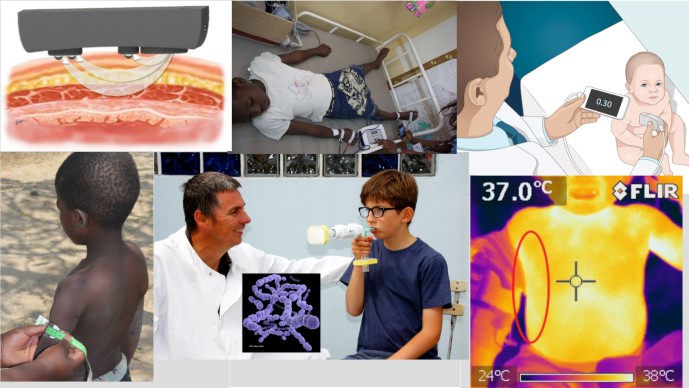New Ways of Quickly Diagnosing Children Most at Risk for Pneumonia
- Keith Klugman, Nov 12, 2015

New ways of approaching diagnostics and treatment are critical to preventing, detecting and treating pneumonia. Astoundingly, pneumonia continues to be the #1 infectious killer of children under the age of five worldwide - more than HIV, TB and malaria combined. People of any age, in any country, are at risk of contracting pneumonia, but 99 percent of all childhood deaths from pneumonia occur in the developing world.
On this World Pneumonia Day, I am proud to announce new grants to ten scientists working on nine projects in seven countries to test out-of-the-box ideas to improve pneumonia detection. The grants announced for funding today include awards to:
Tissue oxygen saturation in malnutrition and pneumonia: Dr. Mark Ansermino
The University of British Columbia, Vancouver, Canada
Dr. Ansermino will use near-infrared spectroscopy - a technique for measuring chemicals - to assess energy reserves in children with severe malnutrition and pneumonia. He and his team will compare their results with a similar but previously tested cardiovascular method.
BIOTOPE - Biomarkers to diagnose Pneumonia: Dr. Joe Gallagher and Dr. Chris Watson
University College Dublin, Dublin, Ireland
Dr. Gallagher and Dr. Watson are working to develop a model for predicting health outcomes based on vital signs and blood and urine samples. They hope to use the model to identify children with bacterial pneumonia and those at risk of serious illness in the community.
Thermal Images of the Lung on a Smart Phone to Differentiate Bacterial from Non-bacterial Causes of Pneumonia: Dr. Patricia Hibberd
Massachusetts General Hospital, Boston, United States of America
Dr. Hibberd will use thermal images of the lung - captured via smartphone - to distinguish between bacterial and non-bacterial causes of pneumonia.
A point of care instrument for rapid diagnosis of pneumonia: Dr. Bastiaan Hoogendoorn
Cardiff University, Cardiff, United Kingdom
Dr. Hoogendoorn will explore whether a new device that measures exhaled breath can distinguish between bacterial and non-bacterial infections in children with pneumonia quickly and effectively.
Smartphone image processing to assess childhood malnutrition: Dr. Heba Khamis
University of NSW, New South Wales, Australia
Dr. Khamis will use smartphone pictures to calculate body measurements in order to improve malnutrition assessment. She ultimately hopes to use this technology to reduce childhood pneumonia deaths.
Assessing malnutrition in pneumonia using BIVA: Dr. Carina King
Institute for Global Health, London, United Kingdom
Dr. King will explore whether a tool for measuring body composition, Bioelectrical Impedance Vector Analysis (BIVA), can accurately measure the health of a body's cells and in turn, the nutrition status of children with pneumonia.
Ultrasound Strain and Time-of-Flight for Diagnosing Pneumonia: Dr. Jonathan Rubin
University of Michigan, Ann Arbor, United States of America
During breathing, lung volume increases and decreases. This change in volume appears on the surface as stretching and shrinking, similar to the surface of a balloon as it is blown up or deflated. Dr. Rubin hopes to use an ultrasound to measure this change of the lungs and accurately detect pneumonia.
A low cost ultrasound system for detection of malnutrition: Professor Mirko Zimic
Universidad Peruana Cayetano Heredia, Lima, Peru
Professor Zimic aims to adapt and evaluate a low-cost and portable system (similar to an ultrasound) that detects pneumonia and measures levels of malnutrition in infants immediately and simultaneously.
A low-cost Malnutrition Diagnostic Device for children: Pavan Dadlani
Philips Research, Eindhoven, Netherlands
Pavan Dadlani will work to create a handheld three-dimensional scanner that can automatically analyze body shape and assess malnutrition in young children, which is a strong risk factor for mortality associated with a variety of common diseases, including pneumonia. Current physical measurements of children to assess nutritional status are time-consuming, uncomfortable for the child, and difficult to take accurately, particularly in low-resource settings.
Today's grants are part of the Grand Challenges Explorations initiative. Learn how you can get involved here.